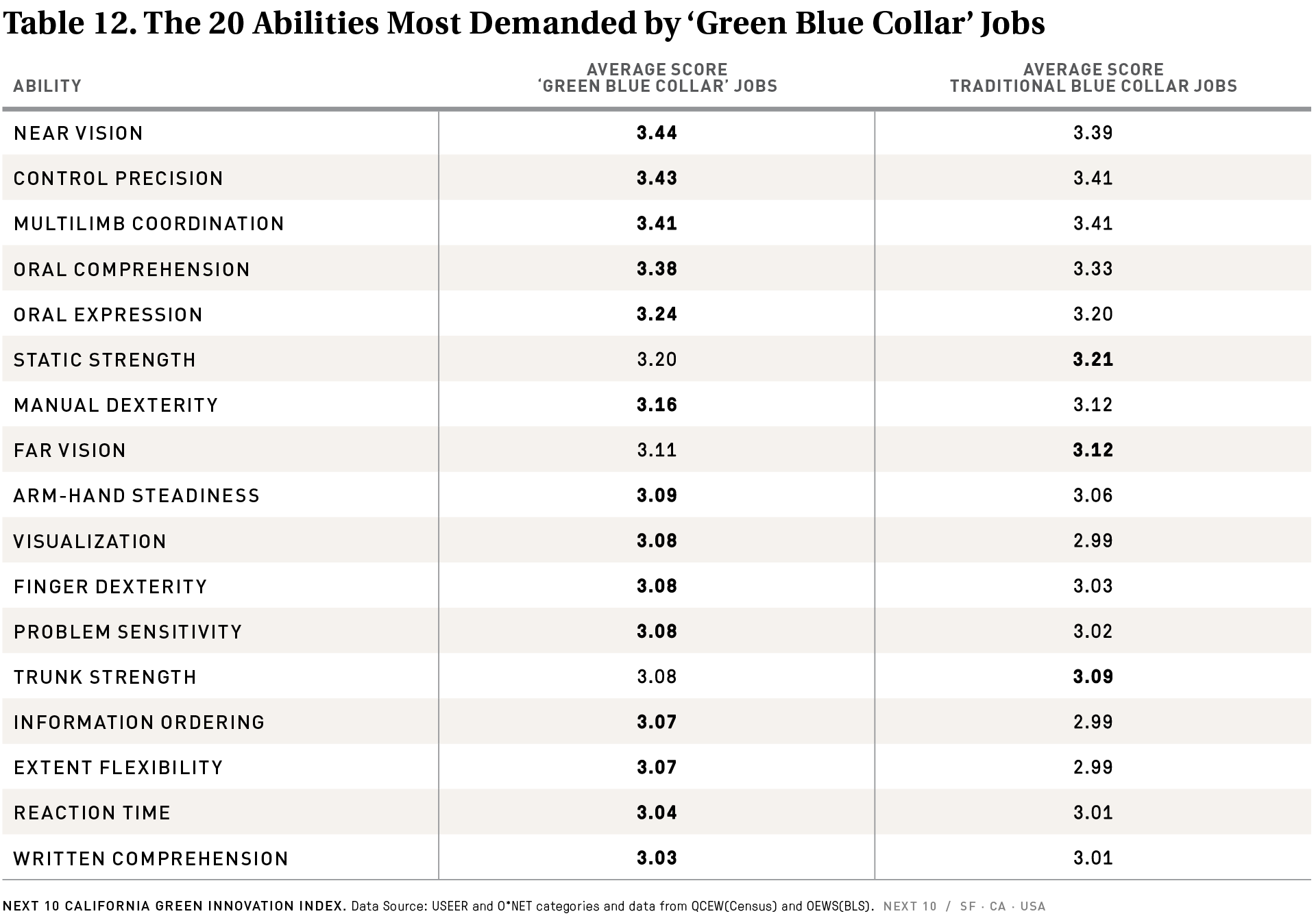Background
- In considering possible occupational pathways from the non-green, blue collar occupations to green occupations, it is useful to think about the content of jobs including the skills, abilities and knowledges required by employers. In the same way that whole occupations can ‘travel’ to the green economy (e.g., a power line installer can change from working on coal powered to wind-powered projects), workers can change occupations from those outside of the green economy, to those with similar job content. Thus, a derrick operator on an oil field might, with some retraining or reorientation, be qualified as a crane operator for a wind farm development.
Highlight
- Another way to understand an area’s potential for green workforce development is to look at its existing ability base.58 In general, workers qualify for certain jobs based on skills, education, competencies and abilities. Some workers who currently work in non-green occupations may be qualified for green jobs based on their ability profile. Table 12 shows the abilities that blue collar green jobs demand, based on standardized ratings from one through five, as compiled by O*NET. At the top of the list is “Near Vision” which refers to the ability to recognize close up objects. There is also “Control Precision” and “Multi-limb Coordination,” both related to a person’s ability to use their hands and manipulate objects. These skills are those reported by employer surveys that rise to the top of skills in demand for green jobs.
58 “Browse by O*Net Data.” Available at: https://www.onetonline.org/find/descriptor/browse/Abilities/
More About
Greening California’s Workforce
Related Content
